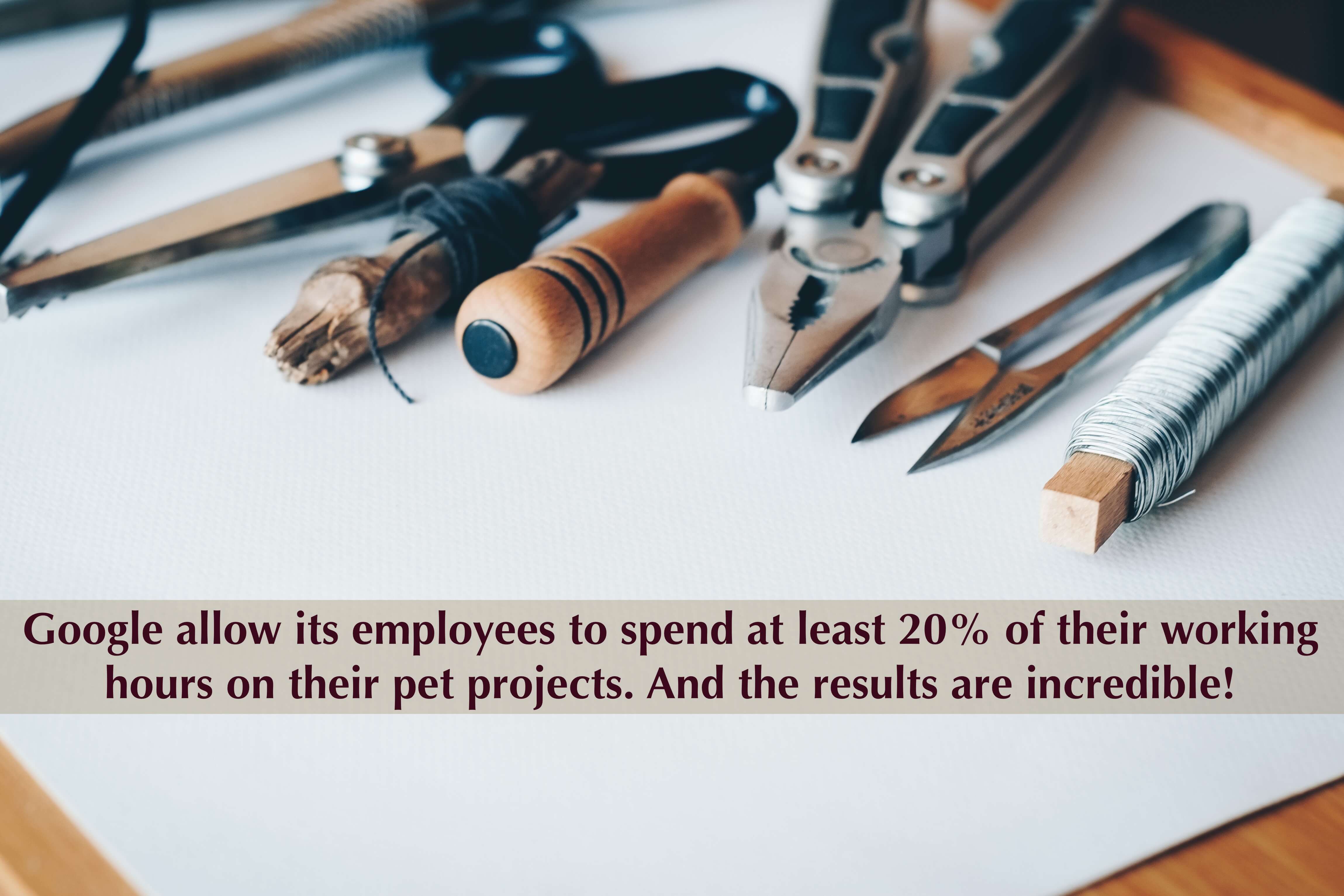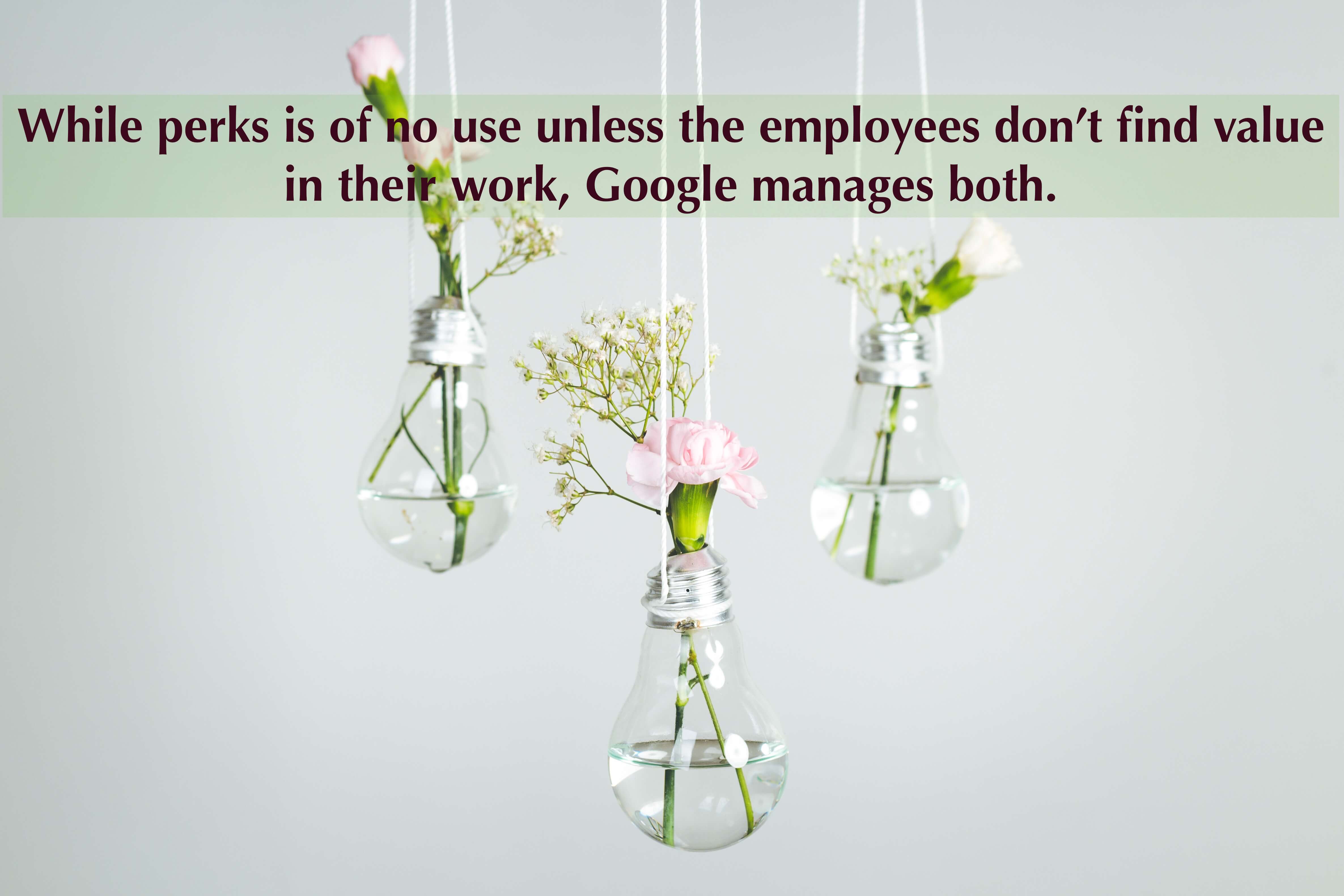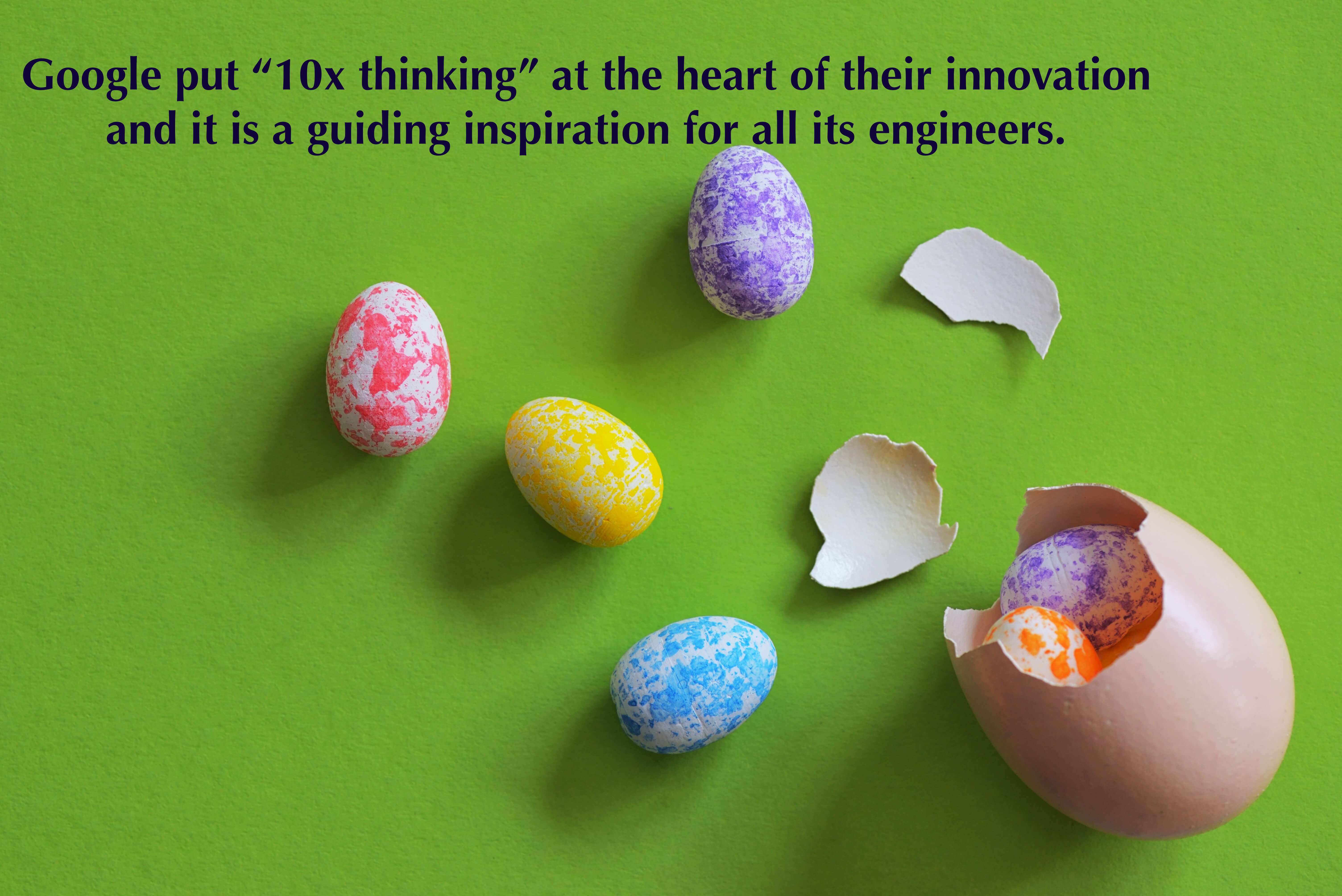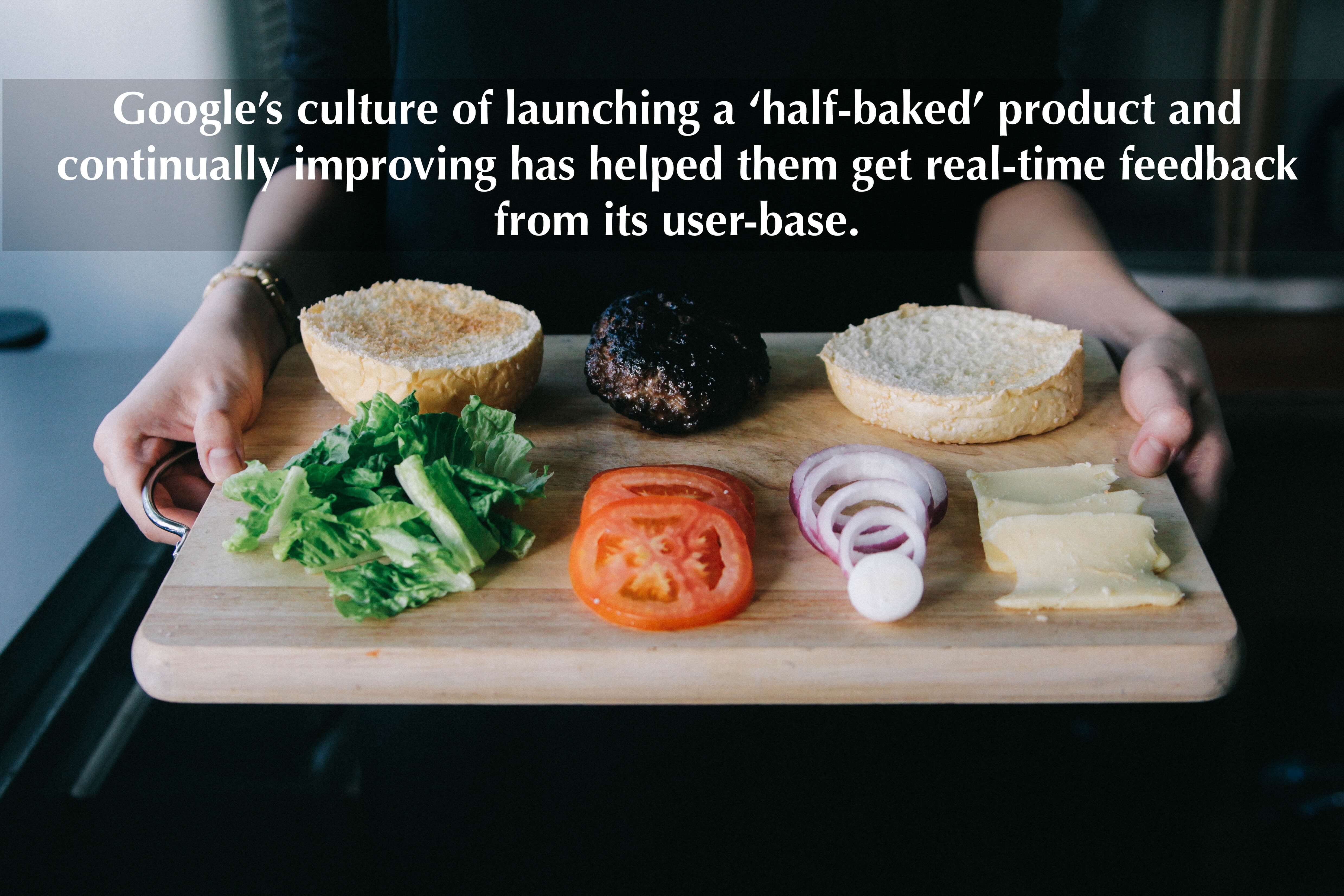Others
20 Takeaways From Google Innovation Culture in 2025!
Article written by Mathew Maniyamkott
Regular contributor to various magazines. Passionate about entrepreneurship, startups, marketing, and productivity.
15 min read
19 September 2025

60 Seconds Summary:
What makes Google’s innovation culture truly stand out? This blog curates key lessons that highlight the power of mindset, leadership, and a work environment built on creativity, psychological safety, and bold experimentation. Rather than offering a step-by-step guide, we give it to you as a source of inspiration, urging organizations to rethink their approach to innovation. By embracing the right cultural values and leveraging modern platforms, teams can foster a future-ready workplace that drives meaningful, lasting change without trying to replicate Google, but by learning from its spirit.
You’re walking into an office where every idea gets a moment in the spotlight, where innovation isn’t great to have but is expected. That’s the Google reality that continues to inspire companies worldwide, and how Google promotes creativity and innovation.
Google and its culture are built around four cornerstones – mission, transparency, voice, and space. Other companies in the world benchmark Google when it comes to innovation and rightly so. You could name any technology and Google would have worked on it. So much so that it had to create a company called Alphabet (which includes Google) which is basically all of their companies put together.
This article will talk about:
- 20 innovations in Google’s culture
- The takeaways from each of them
- Why it will always remain one of the best places on Earth to work for.
Here are 20 takeaways from the Google innovation culture textbook.
1. 20 Percent Time Policy

An innovation policy of Google that almost everyone knows is its popular 20 percent time policy. This policy allows Google employees to spend at least 20% of their working hours on their pet projects.
Some of the projects that have come out of this are Google Maps, AdSense, Gmail, Google News, to name a few. Whenever Googlers feel like working on something extra that is beyond their job, they get extra resources and the freedom to complete it.
By allowing their employees this freedom, not only was Google able to gain so much, but they were also able to attract talented folks to join their workforce.
2. Google Events
As if allowing their employees the freedom to innovate is not enough, Google (and its countless volunteers around the world) make it a habit to invite speakers from different parts of the world.
The collaboration that happens in the Google innovation culture because of this initiative opens their mind. Also, it reduces the monotony of work life.
3. Google’s TGIF
Google also has a weekly meeting where anyone can ask questions to its top leaders about any issues. In its TGIF (Thank God it’s Friday) meetings, the upper management also shares private information about company events over the week.
Google expects its employees to use this information wisely; thus creating a sense of ownership and transparency among its employees.
If you are also looking to express that you value your employees, then you have to share important information on a regular basis. Like the Google innovation culture, allow them the liberty to ask questions.
4. Dedicated Focus on Employee Welfare

A company that exclusively focuses on the welfare of its employees will always see an improvement in productivity and employee happiness.
There are plenty of such perks that make Google an extremely employee-friendly workspace. This includes chef-prepared meals, nap pods, video games, free health and dental care, subsidies for buying hybrid cars, employee trips, gyms, financial bonuses and more.
While these perks are nothing if the employees don’t find value in their work, Google goes above and beyond in creating a perfect yet challenging workspace as well.
So which perks matter the most to your employees? Consider doing an Employee Benefits Feedback Survey to find out. You can create a free account to get access to this template and lots more features.
14-day free trial • Cancel Anytime • No Credit Card Required • No Strings Attached
5. Collaboration Always Wins
In most companies, there is no free flow of information between different departments. As a result, it becomes impossible to make decisions quickly when working on a big project. This leads to a lot of friction and can be quite stressful for the people who are working on that particular project.
If you are working on a project at Google, the Google innovation culture is such that all the stakeholders communicate with each other on a regular basis, and ideas are shared with everyone.
Feedback and ideas flow freely between the team members. Researchers, scientists, engineers, product managers, analysts – all of them work together to achieve success in a project.
6. Have A Mission That Keeps Everyone Going

Most of us wake up to do a job and we may or may not be too enthusiastic about it. But if your company has a mission statement that transcends the mundaneness of a 9-5 job, it is no more just a job for you. Working in a company that has a strong mission statement and works hard to achieve the same is a blessing.
Google’s mission is to ‘organize the world’s information and make it universally accessible and useful.’ Google uses this simple mission statement to make all its decisions.
A post on Think With Google says -“When we start work in a new area, it’s often because we see an important issue that hasn’t been solved and we’re confident that technology can make a difference.’ Google’s mission statement has the potential to touch many lives. Consequently, the employees feel connected to it and are emboldened to help achieve it.
7. Dogged Reliance On Data
If you had to make a decision based either on opinions or specific data, would you rather choose data to make the decision or random opinions? It is a no-brainer. Data usually beats opinions.
Google has millions of data points, and they make it a habit to test and measure everything that they do. In this context, ‘People Operations’ is what Google calls its HR department. They send out an anonymous survey called Googlegeist to its employees around the world.
This survey asks for its employee’s views on their well-being, compensation, company culture, diversity, career balance and more. This data is then sorted in many ways – by manager, by department, by tenure, by region, and more. Managers at all levels get the survey results, and are requested to consider this data carefully and take necessary steps.
8. Making Work Better with ‘re:Work’
There was a time when Google used to ask questions like the one below:
“You are shrunk to the height of a nickel and your mass is proportionately reduced so as to maintain your original density. You are then thrown into an empty glass blender. The blades will start moving in 60 seconds. What do you do?”
These unstructured questions were asked with the belief that people would give highly original and well-thought-out answers. However, Google lately discovered that structured questions related to their work…work best.
Since then, Google is using its internal data and is trying to pay it forward by helping other organizations through its re:Work program where they share best management practices. They provide insights into how Google maintains a high level of innovation and creativity. So Google, thanks to its willingness to share its best practices, has not only build a hub of ideas for ways to “make work better”, but it is also an innovation in itself.
9. Eight-Point Plan for Managers
Creating point-by-point ‘rules’ for its managers might not seem like the most-employee friendly thing to do. But reading these rules might give you a different opinion.
Statisticians inside the Google HQ came up with a plan code-named Project Oxygen. Under this plan, they analyzed performance reviews, feedback surveys and nominations for top manager awards to create ‘Eight Habits of Highly Effective Google Managers’.
- Be a good coach.
- Empower your team and don’t micromanage.
- Express interest in team members’ success and personal well-being.
- Don’t be a sissy. Be productive and results-oriented.
- Be a good communicator and listen to your team.
- Help your employees with career development.
- Have a clear vision and strategy for the team.
- Have key technical skills so you can help advise the team.
These habits are created from Google’s own data. Thus, their employees will be able to relate much better to it.
10. The Spirit of “10x Thinking”

Google says that “10x thinking” is at the heart of their innovation, and it is a guiding inspiration for all its engineers.
To put it more clearly, they say that true innovation happens when you try to make something better by 10 times rather than just 10%. This method of thinking is what makes Google tick, and it helps them in producing technological innovations that are unparalleled in most other companies.
When you focus on such a goal, your imagination is stretched to the hilt. Your mind can push beyond the usual limits to create something incredible.
11. Be Customer-Focused
The end goal of any product should be to satisfy the needs of its customers as much as possible. If your business is clear about focusing on the end user, then the rest of the things that you desire will follow.
Even today you can become number one in any area in the field if you can offer something better than the incumbent. Users only care about what they are getting, in terms of product and service; if you give them what they want, you can easily find success.
Like the Google innovation culture, keep improving your product. And soon you will find yourself creating a culture of winning.
12. Launch and Continuously Improve

More often than not, businesses want to give out only the best version of their products; instead of putting out their product to the world to get continuous feedback.
However, many service-oriented businesses usually have a soft launch where they invite potential clients to visit the place (or use the product), get feedback from customers, and see what they love and what they don’t. Then, they take the feedback and improve upon the product in iterations. This is how they grow the business (or product) into a successful one.
Similarly, Google usually releases a beta version (a version of the product that is available to a set of users outside the company before public release) of products. Then, they make iterations based on user feedback. Even today, they do this process where each feedback is carefully noted and necessary action is taken.
This culture of launching a ‘half-baked’ product and continually improving has helped Google get real-time feedback from its user-base.
13. Sharing is Everything
Google’s employees are always in the loop about the happenings in the company – no matter how big or small it is.
During every quarter, Google shares its board letter with its 88,000+ odd employees, and the same slides that are presented to the Board of Directors are shown in a company-wide meeting.
By giving such unrestricted access for all of its employees, Google is encouraging discussion and exchange of ideas which will result in a lot of uninterrupted dialogue and innovation. Such an open-office culture creates a lot of collaboration and fuels exchange of thoughts.
14. Culture of Encouraging Failures
While it might be impossible for us to think that Google has a list of products that failed, its culture of embracing failure is exactly the reason for its success.
Some of Google’s biggest failures are Google+, Google Buzz, Google Notebook, Google Helpouts, Google Site Search, Google Glass, Currents, Google Buzz, Google Wave, Google Lively, Google Answers…and so on!
According to Google, it is better to fail as long as you are making mistakes and are correcting them fast. The technology industry moves so fast that failure can be worn as a badge of honor – if you make it a point to learn from your mistakes and keep striving for more. Moreover, the knowledge that you get from failures is used in the development of future products.
15. Right Hiring Policies
Having over 88,000 people around the world on the payroll and a reputation as one of the best places to work on earth is an impressive feat. It’s one which very few companies can ever boast of. So the Google innovation culture is doing something right when it comes to their hiring practices, right?
Google has always wanted to attract people who want to solve big problems. Consequently, Google’s referral policy has worked wonders for them and they have found that the best hires are usually ones that come through referrals.
Moreover, Google has a standard interview process. They look for people who are good at a lot of things, love challenges and are open to change. They are selected through a series of detailed interviews and are tested on their role-related knowledge, leadership, general cognitive ability, and personality.
In the end, before hiring for expertise, they hire for capability and learning ability.
16. Idea-Focused Environment
When you have a culture where ideas are openly encouraged, you will automatically start looking for inspiration in the remotest of places.
An article on Google’s blog says that they created a platform for users to add data on Google Maps when an engineer from the Indian office opined that a lack of online map data would limit the usefulness of Google Maps.
This is how Google Map Maker, a tool that lets anyone make changes to Google Maps, came into existence. All of this because ideas are flown freely, respected and considered.
17. Googler to Googler Network
Google has developed a culture where team members are expected to do high-quality work.
While Google hires exceptional professionals with a high level of skillset, it doesn’t shy away from providing training for its teams and individuals. It also has a G2G network who volunteer their time to help other Googlers.
These G2G members do one-on-one mentoring, teach them professional courses, coach them on psychological safety and help build a culture where everyone feels safe. This peer to peer support helps the employees feel safe in the knowledge that there will always be someone from the organization who can help them out.
18. Provide Clarity and Direction
While providing clarity and direction might seem like mundane things that are best written on a paper, the lack of such a structure can be demoralizing to employees.
Google’s employees are clearly led to understand their goals, roles and the kind of execution that will go into their job. Teams are formed based on individual strengths. This aspect is important when it comes to measuring the team’s as well as the individual’s success.
A business achieves clarity when it is transparent in its dealings. Both clarity and direction can be a killer combination for a business to achieve success.
19. Keep the Environment Fun
A study by Bright HR says that having fun at work reduces absence, boosts productivity and lowers stress levels; Google makes sure that its employees have a lot of fun at work too.
In fact, employees prefer having fun at work more than attending motivational lectures and other seminars, as helpful as they might be. Knowing this, Google conducts a lot of events and games where Googlers can let off some steam.
20. Being Humble and Curious
You might wonder how being humble and curious makes Google one of the most innovative companies in the world.
When you admit that you don’t know it all, you don’t mind working on borrowed ideas. Also, you are open to suggestions and utilize existing models instead of trying to create everything from scratch.
Google also creates systems to store information from different research and development projects. So this information can be systematically utilized for projects in the future. When you keep track of ideas and old projects, you might eventually stumble upon something that is feasible to work with new technology.
Conclusion
Google is one of those rare companies that has been able to create a difference by creating a culture of innovation.
Implementing Google’s innovation principles is easy, just a thoughtful adaptation of how it will fit your organizational context is the first step. Start with better understanding your current culture through getting the right feedback from your employees.
Tools like SurveySparrow can help organizations capture this kind of nuanced employee and customer insights that Google prioritizes. By creating a conversational feedback loop rather than a traditional survey one, your organization can constantly get necessary feedback for a Google-style innovation.
Take a step back, understand what aspect of Google's innovation culture could transform your organization's ability to create breakthrough value? The answer might just be your most important next step toward building your own innovation engine.

Thousands of brands trust SurveySparrow to turn feedback into growth. Try it free today!
Mathew Maniyamkott
Guest Blogger at SurveySparrow
Frequently Asked Questions (FAQs)
Google’s innovation culture is built on four key cornerstones: mission, transparency, voice, and space. These elements foster an environment where creativity and experimentation are encouraged, helping Google remain a benchmark for innovation worldwide.
Google’s culture emphasizes open communication and regular sharing of ideas across teams and departments. This collaborative approach ensures feedback flows freely, enabling effective teamwork and innovative problem-solving
Google invests in employee welfare with perks like free meals, healthcare, and fun workspaces, but also provides a strong sense of mission and opportunities for growth through learning, mentoring, and open idea-sharing
Related Articles

Others
Halloween Haunted House Escapade: 2019
3 MINUTES
31 October 2019

Others
Venmo vs. Cash App: Which Mobile Payment App is Right for You?
14 MINUTES
8 September 2024

Others
Best Sales Productivity Tools to Boost Efficiency
7 MINUTES
24 March 2024

Others
Marketing the Brand: Importance, Benefits, and Strategies Explained
9 MINUTES
25 October 2023
